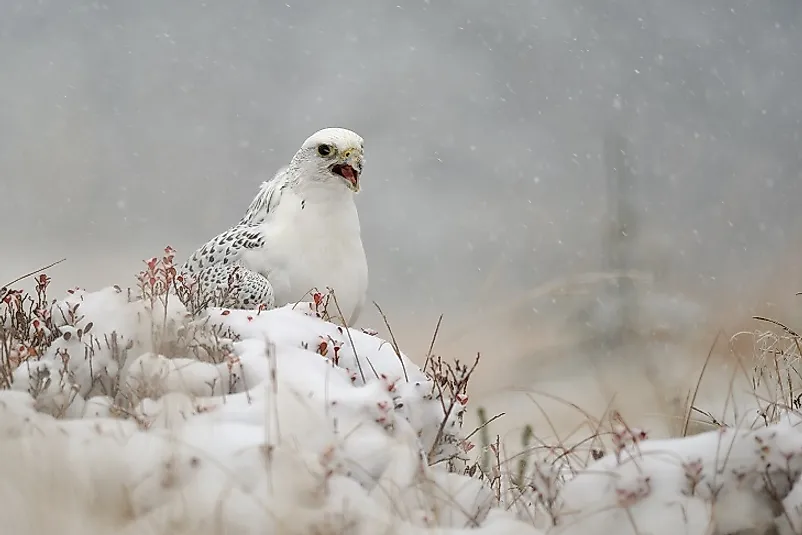Native Birds Of Greenland

Greenland is a 836,109-square mile nation located between the Arctic and Atlantic Oceans. Nearly 75% of the country is covered by a permanent ice sheet. Despite this seemingly harsh habitat, Greenland is home to a diverse number of plants and animals. Birds make up a large portion of this wildlife. Below is a list of some of the native birds inhabiting, nesting, and migrating through Greenland.
Native Birds of Greenland
Northern Fulmar
The Northern Fulmar is a seabird with a wingspan of between 40 and 44 inches. Characterized by its grey and white plumage and light yellow bill, this bird eats shrimp, fish, jellyfish, and even carrion. It can be found throughout the northern hemisphere and has a very large population in Greenland. Approximately 240,000 to 400,000 adult birds breed here every year and between 10,000 and 100,000 spend the winters in Greenland. This bird is most frequently seen in the northern region of the country. The global population of these birds has actually grown over the last 100 years because they have taken advantage of the fish waste thrown off the vast number of fishing boats. However, climate change may soon affect availability of their food source.
Brant
The Brant, also known as the Brent Goose, grows to between 22 and 26 inches long, with an adult wingspan of 42 to 48 inches. They have a grey body with a darker grey neck and head and white feathers under their tail. The brant has the shortest tail of any goose in the world. Its diet consists of eelgrass and sea lettuce, a type of seaweed. This food preference has led them to mainly inhabit coastal areas. In times of food shortages, the brant has adapted its diet in order to survive. Recently, this bird has begun to move inland to agricultural areas where they feed on grasses and grains. This decrease in food supply is believed to be caused by climate change
Gyrfalcon
The Gyrfalcon grows to between 19 and 24 inches in length among males, while the larger females can grow up to 26 inches long. Adult males have a 43- to 51-inch wingspan, while females can have wingspans up to 63 inches. These birds are the largest species of falcon. Depending on where the gyrfalcon lives, its appearance ranges from all white, to white with brown spots, to all brown. Due to the surrounding in Greenland, the gyrfalcons here are lighter in color with some darker spotting throughout the body and wings. They can be found throughout the coastlines and tundras, using these areas both for inhabiting and breeding. Humans have been involved with these birds for centuries, using them as tools for hunting and in falconry. This has led to some birds being removed from the wild to be put in captivity. Because of their susceptibility to disease, they often become sick and die.
For other notable Greenland bird species, take a look at the chart at the bottom of the page.
Threats and Conservation
As this article and the chart below demonstrate, the bird life within Greenland is quite diverse. In fact, researchers have identified at least 235 bird species in the country, some only migrating through. Many tourists enjoy the birdwatching opportunities this nation provides. Unfortunately, global climate change is a significant threat to these, and other, species. Since marine life is drastically affected by increasing water temperatures, traditional food sources are already, or at risk of, declining. Habitat degradation, including the destruction of coastal wetlands, also has negative consequences on bird populations here. The government and several nonprofits are working together to conserve bird habitats and therefore their numbers. However, these efforts will require international cooperation in order to be successful.
Native Birds Of Greenland
| Native Birds of Greenland | Scientific Name |
|---|---|
| Northern Fulmar | Fulmarus glacialis |
| Brant | Branta bernicla |
| Gyrfalcon | Falco rusticolus |
| Lapland Longspur | Calcarius lapponicus |
| Dovekie | Alle alle |
| Snowy Owl | Bubo scandiacus |
| Redwing | Turdus iliacus |
| Common Redpoll | Acanthis flammea |
| Great Cormorant | Phalacrocorax carbo |
| Red-Throated Loon | Gavia stellata |











